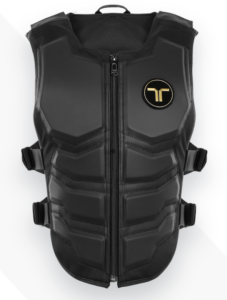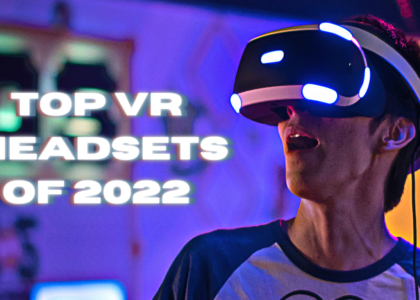


Virtual reality games are a new add-on to the gaming industry. Recently Malls are equipped with virtual reality (VR) gadgets in their gaming centers and a huge queue of people were waiting to experience virtual reality gaming.
Virtual reality has often bamboozled people making them believe that the things that they see are real and just part of the experience. But if you've ever used virtual reality, you know that everything you would feel if you reached out to grasp virtual elements is nothing but empty space. To push and pull virtual items, motion tracking technology works in tandem with controllers to simulate players’ hand movements and project them into virtual hands. This is why to change how we perceive the Metaverse, Haptic technology is developed. While a VR headset delivers an astonishingly realistic recreation of the world that we can hear and see, a full-body haptic suit accomplishes the same for the world of touch and sensation. Today we will take a look into two Haptic suits that are out there in the market. The Haptic suits by bHaptics and Teslasuit. But first, let us start by exploring what Haptic technology is all about.
Haptic technology recreates the sense of touch by the combination of force, vibration and
motion. This technology allows a user to receive feedback from the virtual world.
The haptic
suits use electrostimulation systems to send small pulses to the different parts of the suits
that in turn stimulate the wearer's body.
Currently, haptic suits are used in the entertainment and gaming sectors. However, there are other sectors such as training and education which might use haptic technology in future. We are already on the road leading towards a future where haptic suits will help in everything and will be present everywhere. I have listed out why there is a need for haptic suits in training and education.
Training: Putting humans in real-life risky situations for teaching is a risk not necessary to take with today's technology. Most of the time, it is impossible to place humans in situations where they would truly feel the danger required to push themselves. Because real-world training is too hard, expensive, and unsafe, immersive technologies such as haptic suits lay the groundwork for new sorts of learning environments that are both safe and immersive.
Education: Haptic Suits are an amazing research tool used by research institutes worldwide.
They can also be used to understand the working of the human brain and the human body.
Two different Haptic Suits are on the market:

The Teslasuit is a skin-tight multi-sensor suit where impact can be felt. The suit is equipped with haptic feedback, motion capture and a biometry system. It is a full-body motion capture suit with 68 haptic points that can simulate a wide range of physical sensations, from a gentle trickle of water to the tremendous g-force of a jet fighter engine. The haptic feedback feature uses electromuscular stimulation, the device gives users a lifelike feeling. Like you are touching a real thing in the metaverse. The motion capture technology records and tracks the user's body position and movements, resulting in a digital depiction of the user. The biometry system monitors a variety of key data signals, allowing for enhanced health- and performance-related data analysis.

bHaptics is a South Korean-based start-up. They have a unique technology which converts sound into haptic feedback in real-time. Their TactSuit X40 and TactSuit X16 Haptic VR vests are Bluetooth Low Energy 4.0 enabled and include an audio connector. This enables consoles such as the PS4, PSVR, and Xbox to translate audio-to-haptic feedback, allowing gamers to utilize these vests with a variety of devices.
TactSuit X40 stands at $500 and features 40 Eccentric Rotating Mass (ERM) vibration motors distributed across the front and back of the vest, with a 9,800 mAh lithium-ion battery providing 18+ hours of playing. The TactSuit X16 stands at $300, has 16 ERM motors, has smaller batteries at 4,900 mAh and offers an aggregate playtime of 22+ hours, according to the manufacturer. Both models include Bluetooth 4.0 as well as an external audio connection for non-supported games.
These vests are compatible with SteamVR, the Oculus Quest, and the Oculus Quest 2. This native compatibility for SteamVR and the Oculus platform implies that any upgraded games might use these vests, which are presently only supported by a few titles. Onward, Thrill of the Fight, and Sairento VR are among the titles supported.

1, MUTHUSAMY STREET,
KAVUNDAMPALAYAM,
COIMBATORE
TAMIL NADU, INDIA
IP POST LLC
312 W. 2ND ST #4173
CASPER, WY 82601
UNITED STATES


